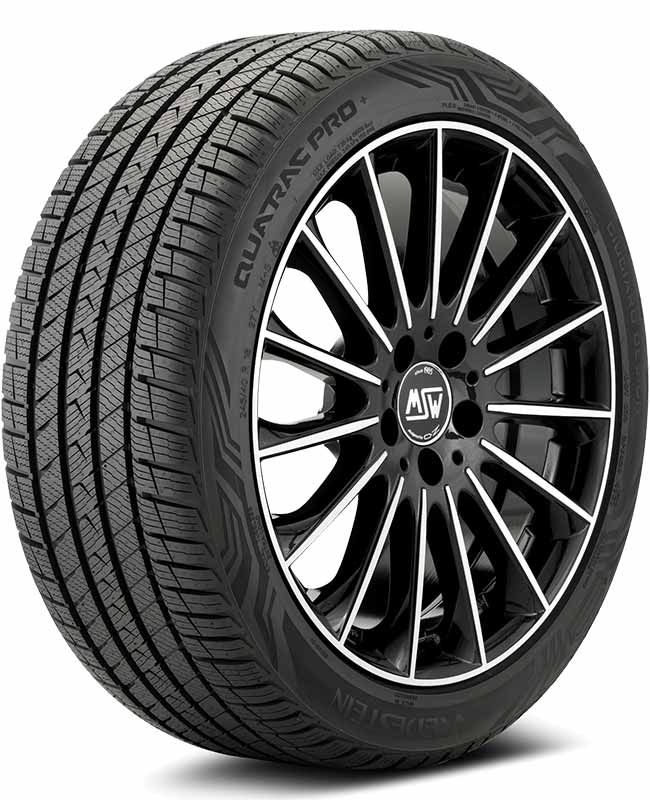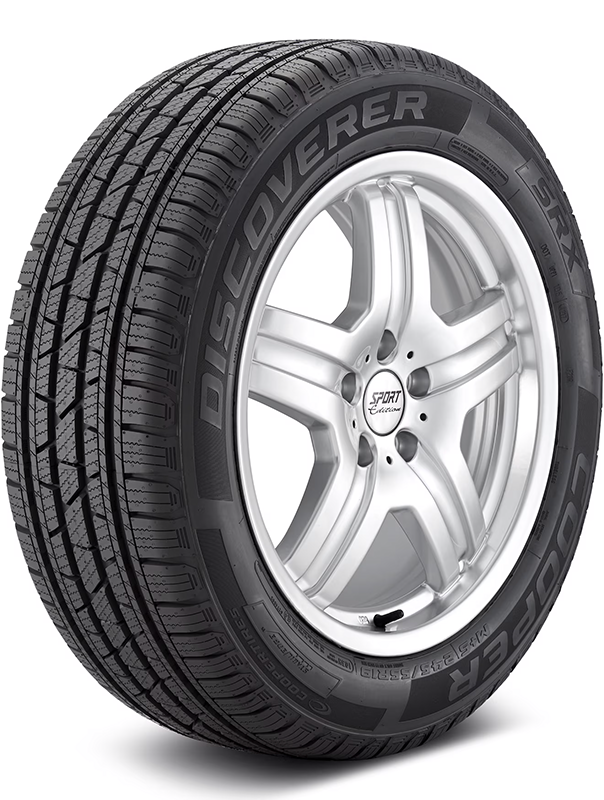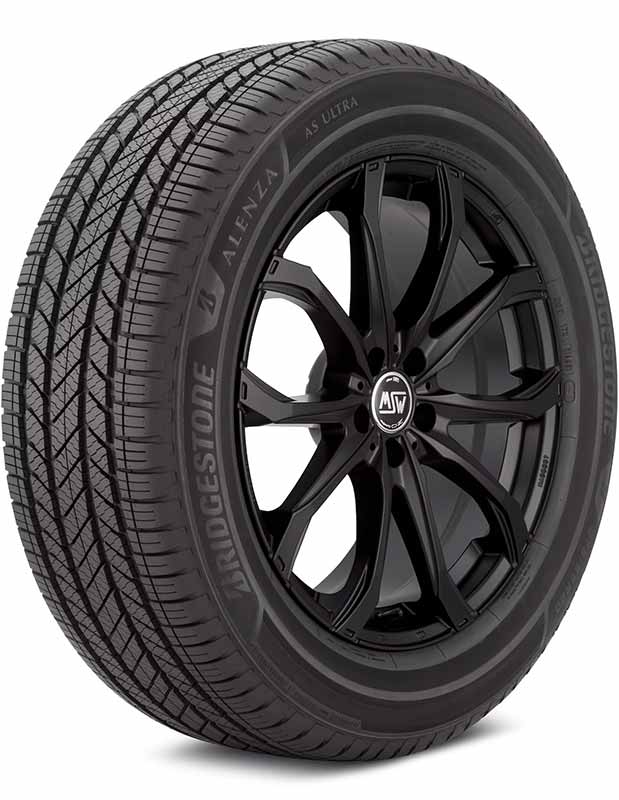Ever been on a highway and felt like your car’s front end decided to starts to shimmy and shake? It’s not only puzzling but can be downright nerve-wracking! But don’t sweat it – you’re not alone, and there’s a reason for it.
Front End Of Car Vibrates At High Speeds
The front end of a car can vibrate at high speeds primarily due to imbalances or wear in the tires, wheel misalignment issues, or damaged components in the suspension or steering systems.
In this article, we’ll dissect the intricate world of car mechanics, focusing on understanding the car’s front end, the common reasons behind those mysterious vibrations, detecting problems, and finding the right solutions to ensure a smooth and safe journey on the road.
Let’s take a closer look.
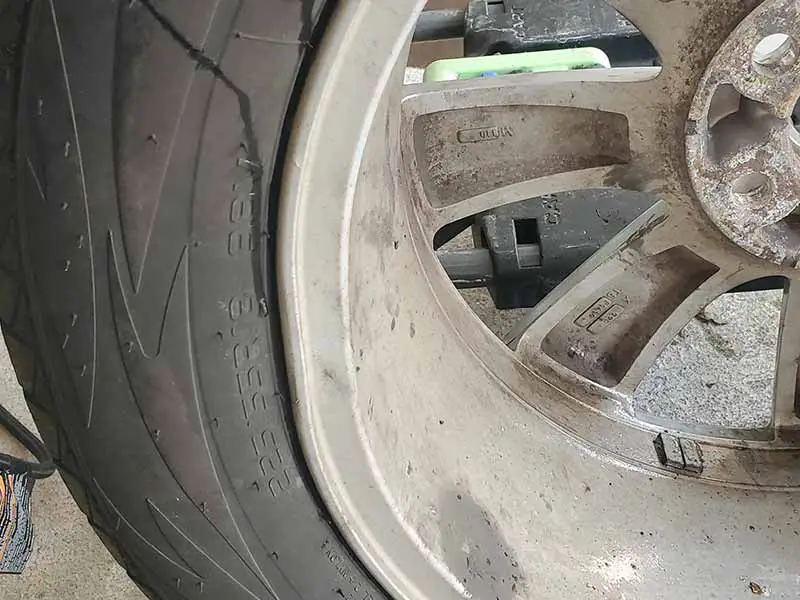
Understanding Your Car’s Front End
When we talk about the “front end” of a car, we’re chatting about everything that makes your car go forward, turn left and right, and stop smoothly. It includes a bunch of parts that all work together like a well-rehearsed band. If one instrument (or part) is out of tune, the whole performance might feel a bit… shaky.
Tires
- Importance of Tires: Think of tires like your car’s shoes. Just like you wouldn’t run in flip-flops, a car needs the right set of tires to move smoothly.
- Types of Tires: There are winter tires, summer tires, and all-season ones. Kinda like having boots for snow, sandals for the beach, and sneakers for everything else!
- Tire Threads: Those zig-zag patterns on the tires? They’re super important. They grip the road and keep you safe, especially when it’s rainy or snowy.
Wheels
- Wheel’s Job: The wheel is what holds onto the tire. Imagine it like the solid sole of your shoe.
- Materials: Wheels can be made of different stuff. Most are made of metals like aluminum or steel. Each has its own pros and cons!
Suspension
Imagine driving over a bunch of large rocks and bumps. Thanks to the suspension, you won’t feel them as much.
- Shock Absorbers: These are like your car’s shock-proof armor. They take in all those jolts and bumps, making your ride smooth.
- Springs: These help by supporting the weight of your car. Think of them as big, strong rubber bands that bounce back every time they’re pushed down.
Brakes
Every car needs to stop. And that’s where brakes come in.
- Disc Brakes: Most modern cars use these. They have a big disc that gets squeezed by brake pads to make your car stop.
- Drum Brakes: Some older cars, or the rear wheels of some new cars, might have these. They work kinda like a drum – when you hit the brakes, brake shoes push out against a drum, making your car slow down.
Steering
Steering is all about making those lefts and rights. And trust me, it’s more than just turning a wheel!
- Steering Wheel: The part you hold onto. This sends a message to the other parts about which way you want to go.
- Steering Column: This is like the messenger. It takes your steering wheel’s message and passes it on.
- Tie Rods and Ball Joints: Think of these like your car’s elbows and wrists. They move and adjust to help your car turn smoothly.
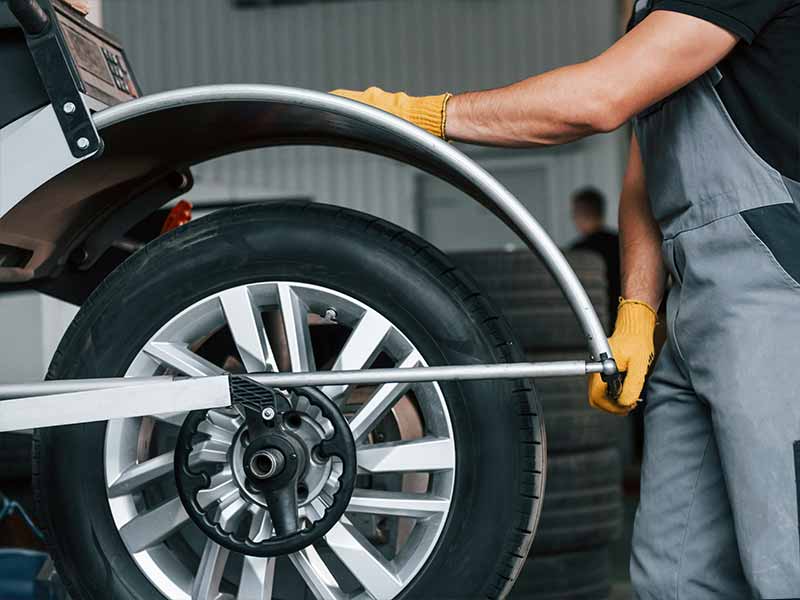
Common Reasons for Front End Vibrations
Let’s discuss the details of the usual suspects.
1. Tire Balancing
- What’s balancing? When your tires aren’t balanced all the way around you’ll definitely feel some car vibration. If you’re feeling it through the steering wheel or the front end it’s likely the front tires. They need to be balanced so they roll smoothly.
- Out of Whack: Wheel weights can fall off or damage from curbs and potholes can throw off the balance. When this happens, your car or truck heels will become unbalanced and it becomes noticeable at a high speed.
2. Uneven Tire Wear
- Wearing Down: Just like shoes, tires get worn out. If they wear unevenly, they can’t grip the road properly and they may develop wear patterns that can cause your car to shake.
- Patterns: Sometimes you’ll see weird patterns, like more wear on one side or diagonal grooves called cupping. That’s a big clue that something’s with your wheel alignment.
3. Wheel Alignment
- Walking Straight: Ever tried walking in a straight line with one foot pointing out? Tough, right? Cars need their “feet” (wheels) to point straight too.
- Signs of Trouble: If your car drifts to one side or if the steering wheel isn’t straight when you’re going forward, you might have an alignment issue.
4. Damaged Tires or Wheels
- Dings and Dents: Sometimes, things like potholes can damage your tires or wheels. It’s like having a bruise on an apple; it’s still an apple but not as perfect.
- Spotting the Damage: If you see cuts in your tire or if your wheel looks bent, that’s a sign. And trust me, driving on damaged wheels is no fun.
5. Other Damaged Parts
- Suspension System: Remember the car’s cushions? If they’re hurt, they can’t absorb those bumps and jolts, making the car shake.
- Brakes: If parts of your brakes wear out unevenly or get damaged, they can cause vibrations. Think of it like trying to stop a spinning toy with one hand instead of two.

How to Detect the Problem
Often, you can determine the cause of your car shaking and vibrating by paying a little extra attention to the signs.
1. Listen to Your Car
- Shakes on Turning: If your car vibrates more when you’re turning, it might be hinting at a problem with the steering or tires.
- Speedy Shivers: Does the shake get more intense as you speed up? Those could be clues pointing towards tire balance or alignment issues.
2. A Good Ol’ Visual Check
- Inspect the Tires: Look for uneven wear patterns, cuts, or any damage. It’s like checking your shoes for holes before a big race!
- Check the Wheels: Any visible dents, bends, or loose lug nuts? A damaged loose wheel can make your ride feel much less smooth.
- Suspension System: See if anything looks out of place or if there’s any fluid leaking. These could hint at potential issues with the shock absorbers or springs.
3. Feel the Steering Wheel Shakes
- Smooth or Rough: If the steering wheel doesn’t feel smooth while turning, there’s a chance something’s not right with the steering system.
- Off-Center: If the steering wheel isn’t straight when driving straight, it’s screaming, “Check the alignment!”
4. Brake Check
- Uneven Slowing: If you feel a wobble or pulsing sensation through the brake pedal when braking, it could mean your brake rotors are warped or there are sticky brake calipers.
- Soft or Hard: Does the brake pedal feel too soft or too hard? Either could be a sign that there’s something amiss in the brake system.
5. Regular Check-ups
- Routine Maintenance: Just like we need regular doctor check-ups, our cars need regular visits to the mechanic. They have tools and expertise to spot things we might miss.
- Early Detection: Catching a problem early can save you from bigger headaches (and potentially bigger bills) down the road.
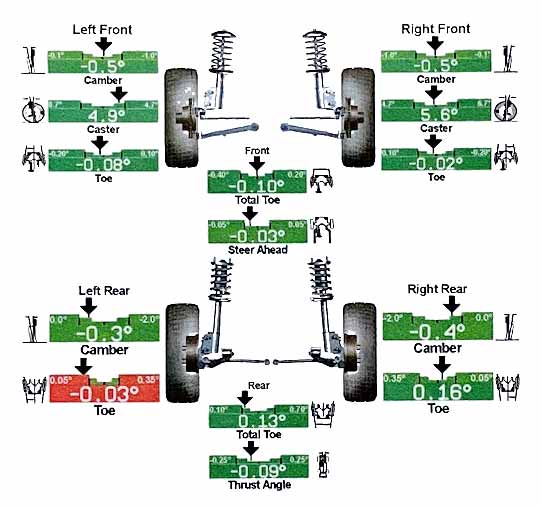
How To Fix Car Shaking At High Speeds
Alright, detectives! Now that we’ve identified potential culprits behind the shake-down, it’s action time. Let’s look at how to turn that shaky, jittery car into the smooth cruiser it was born to be.
1. Tire Rotation and Balancing
- Rotate Regularly: Swapping your tires around every so often ensures they wear evenly.
- Balancing Act: If a tire is off-balance, adding small weights can help. Think of it like adding coins to a wobbly table leg to make it stand straight.
2. Wheel Alignment
- Get it Straight: If your tires aren’t pointing the way they should, getting them aligned can make a world of difference.
- Regular Checks: Sometimes hitting a pothole or curb can throw things off. So, getting periodic alignment checks is a good practice.
3. Replacing Damaged Parts
- Tires: If they’re too worn or damaged, it might be time to invest in a new set. Fresh shoes for your car!
- Wheels: Bent or dented wheels? Consider getting them repaired or replaced. Remember, they’re the backbone of your tires.
- Suspension & Brakes: Damaged shock absorbers, springs, or brake parts? Don’t hesitate to replace them. It’s all about keeping the ride safe and smooth.
4. Regular Maintenance
- Routine Service: Just as we need regular health check-ups, cars do too. It helps spot and fix small issues before they become big problems.
- Oil Changes & Fluid Checks: Keeping your car’s fluids in check, like oil or brake fluid, ensures everything runs smoothly and efficiently.
5. Expert Opinion
- Trusted Mechanics: If you’re unsure about what’s causing the shakes, always turn to a trusted mechanic. They’ve got the tools and know-how to dig deep and find solutions.
- Stay Informed: While mechanics are the experts, knowing a bit about your car helps you make informed decisions and ensures you don’t get taken for a ride (pun intended!).
Resources
Below are some links you may find helpful when learning about tires
- Why does my car vibrate at high speeds? – It Still Runs
- 5 causes of the car vibrating at high speed – Wuling
Final Thoughts
Driving at high speeds and feeling your car’s front end wobble and shake isn’t just a quirky car quirk—it’s a sign your car is trying to tell you something. From the importance of well-balanced tires and the perils of wear and tear to the potential issues hiding in your suspension or steering system, there’s a lot that can contribute to this phenomenon. The key takeaways? Always pay attention to your car’s signals, conduct regular maintenance, and when in doubt, consult a trusted mechanic.
Good luck and happy motoring.


